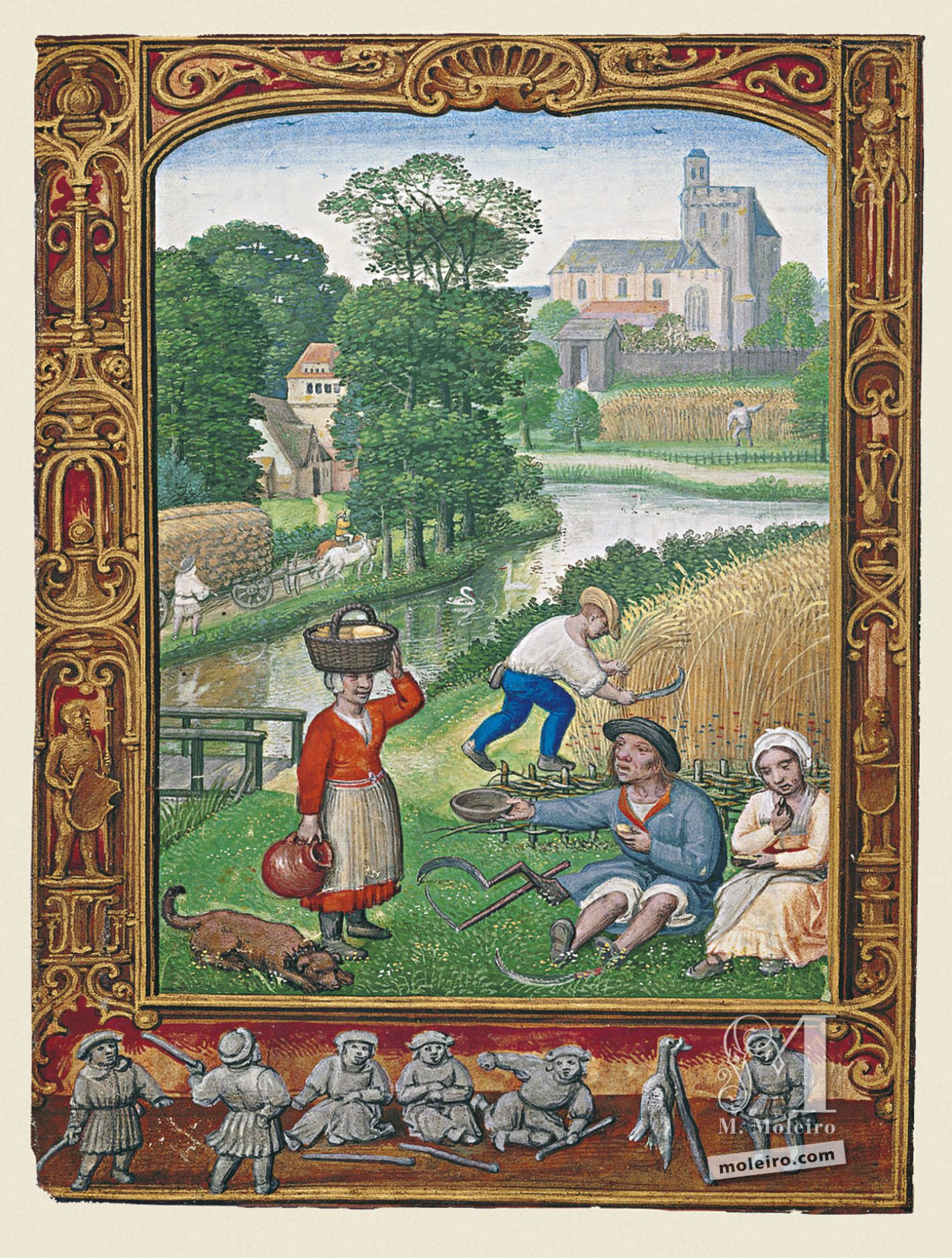The painting on f. 25v shows different aspects of peasant occupations in the month of August. Several peasants are shown sitting on the grass in the foreground, eating during a break from their work. Lying on the floor are the scythes and the pick or stick used to lift, separate and hold the spikes of wheat together. The man stretches a bowl out to ask the woman bringing their lunch for some. The peasant behind them cutting the cereal has a cloth tucked in his belt containing the string for tying sheaves and the whetstone for sharpening the blade. Heather and poppies are represented very sketchily along the edge of the field. The sown field is delimited by a fence made of wicker canes woven around stakes driven into the ground. On the left, separated by a canal or river with swimming swans and a small bridge, is a path with a horse-drawn cart loaded with sheaves of straw going along it. The background of the composition shows another peasant harvesting and a large, fortress-like building and a church which contrasts with the rural buildings in front of it.
The hardships of harvesting were portrayed in two ways in the Middle Ages: actively, shown in the Golf Book in the mid-ground and background, in which the harshness of farming labour in the relentless sun was depicted by means of a hunched peasant with a scythe in one hand about to cut the cereal. This was the most widespread iconographic motif. They were also portrayed passively, by means of a woman feeding the labourers. The British Library manuscript alludes to the excessive heat and the need for refreshment, depicted by items such as the water jug and bowl.
Flanking the borders, practically in the middle of them, are two savages, a man and a woman, carrying a blank coat of arms. Depicted in grisaille in the scene at the bottom are several boys, some sitting on the floor and some standing, brandishing sticks at a bird with its beak trapped by two prongs of a fork. Birds used as targets were depicted in different ways depending on the region. The parrot was replaced in northern France by a jay or a goose, suggesting that “hang the goose” was a folk version of the “bird game”.
